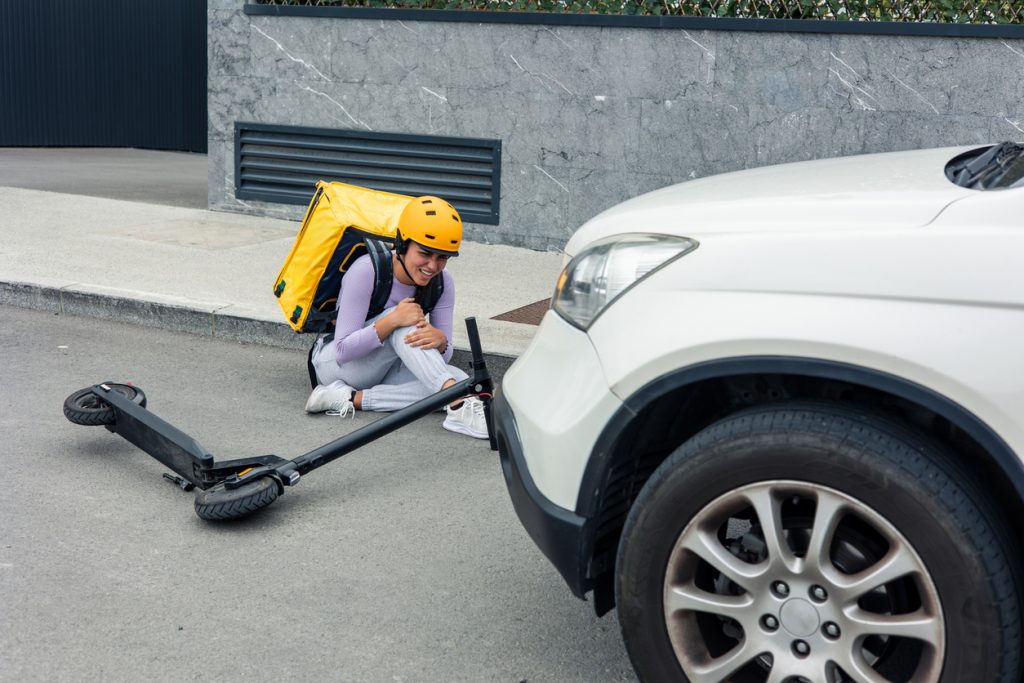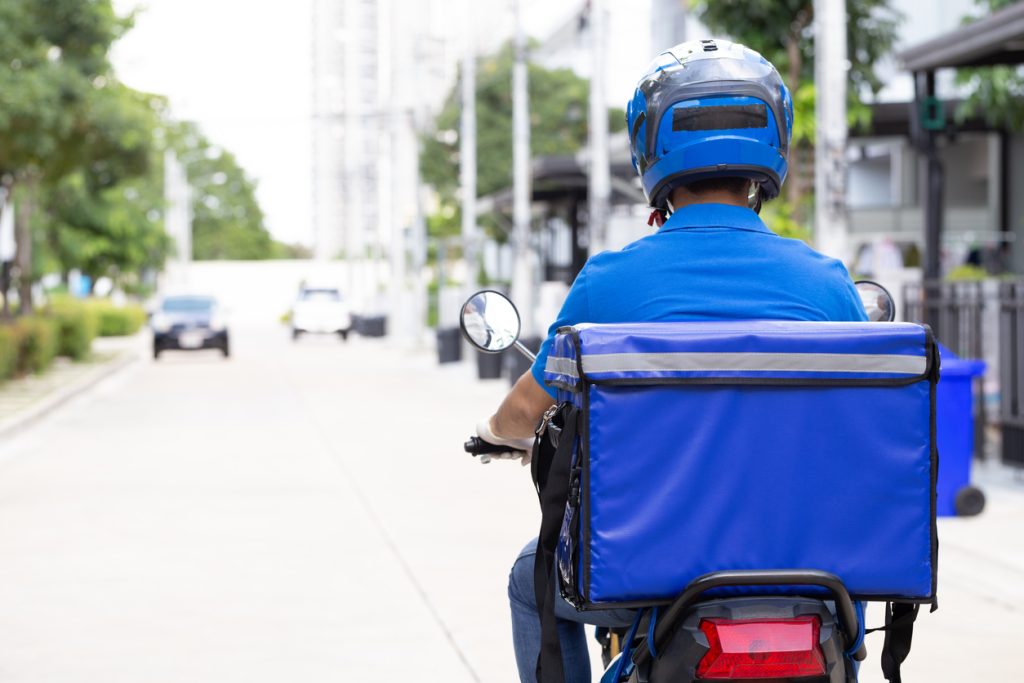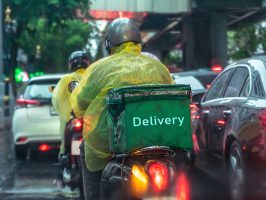Delivery vehicles now dominate Georgia’s roads, from food delivery cars to major parcel service trucks. With this surge, accidents involving these drivers have become increasingly common, raising urgent questions about Georgia delivery driver accident liability. After a crash, uncertainty often surrounds who is responsible—the driver, the company, or another third party. Understanding the legal framework for liability, along with the proper steps to take, can determine the outcome of a claim and affect a victim’s ability to recover damages.
Understanding Georgia Delivery Driver Accident Liability
At its core, Georgia delivery driver accident liability hinges on identifying negligence and assigning responsibility. State law requires that drivers exercise reasonable care to avoid harming others, but liability becomes complicated when an accident involves an employee, an independent contractor, or multiple parties. Employers may be held accountable under the principle of vicarious liability if the driver was acting within the scope of their job duties.
Independent contractors present unique challenges since many companies attempt to limit direct responsibility by categorizing drivers as contractors rather than employees. Yet liability does not vanish, as courts may still impose accountability depending on the degree of control the company exerts. Understanding these distinctions is vital to untangling liability after a collision.
What Victims Should Do Immediately After a Delivery Driver Crash
When an accident occurs, the steps taken immediately afterward can influence how Georgia delivery driver accident liability is proven later. Medical attention must come first, followed by gathering evidence such as photographs, witness accounts, and police reports. Since delivery vehicles are often tracked through apps and company systems, digital records may also provide critical insight into the driver’s activity at the time of the crash.
Securing a copy of the official police report is particularly important. Reports often contain the investigating officer’s assessment of fault and references to traffic law violations. Under Georgia Code Title 40, traffic regulations establish clear duties for drivers, and violations can serve as evidence of negligence in a liability dispute. Victims should also maintain detailed medical records, as these documents connect the injuries directly to the incident.

Determining Employer Responsibility in Georgia Delivery Driver Accident Liability
Employers may attempt to distance themselves from an accident, but the principle of respondeat superior frequently applies. This doctrine holds employers responsible when employees cause harm while performing job duties. In the context of Georgia delivery driver accident liability, the key factor is whether the driver was acting within the scope of employment. For example, a driver completing scheduled deliveries when a crash occurs may place liability on the company.
However, accidents occurring outside job-related tasks, such as personal errands during a shift, may alter the outcome. Courts examine the connection between the driver’s activity and employer benefit to determine accountability. These nuances illustrate why delivery driver accidents are rarely straightforward and why thorough fact analysis becomes essential.
Insurance Coverage in Georgia Delivery Driver Accident Liability
Insurance coverage adds another layer of complexity. Most delivery drivers operate under either company-provided policies or their own auto insurance. When an accident happens, determining which policy applies depends on employment classification and company agreements. Rideshare and delivery services often maintain insurance coverage that activates when drivers are actively completing tasks.
In disputes over Georgia delivery driver accident liability, insurers often attempt to shift responsibility. A driver’s personal policy may exclude coverage for commercial activity, leaving victims reliant on corporate insurance. Understanding these distinctions helps clarify which insurance entity is financially responsible for damages, from medical costs to lost wages.
Proving Negligence in Delivery Driver Accidents
Establishing negligence is central to resolving Georgia delivery driver accident liability. Victims must show that the driver owed a duty of care, breached that duty, and caused measurable harm. Evidence of speeding, distracted driving, or hours-of-service violations can all support claims of negligence.
In Georgia, comparative negligence rules also play a role. If a victim is partially at fault for the accident, compensation may be reduced in proportion to their share of responsibility. This legal standard, outlined under Georgia Code § 51-12-33, requires courts to carefully weigh evidence before assigning damages.

Employer Policies and Their Role in Liability
Many delivery companies establish strict policies regarding routes, deadlines, and app usage. These policies, while intended to increase efficiency, sometimes contribute to unsafe driving conditions. For instance, pressure to meet tight deadlines may encourage speeding or distracted driving, which then becomes central in evaluating Georgia delivery driver accident liability.
When employer policies create an unreasonable risk of harm, courts may impose direct liability on the company. This goes beyond vicarious liability and focuses on negligent supervision, training, or hiring. Companies failing to conduct adequate background checks or enforce safe practices may bear responsibility for the resulting harm.
The Role of Technology in Georgia Delivery Driver Accident Liability
Modern delivery systems rely heavily on GPS tracking, digital apps, and real-time order updates. While technology improves efficiency, it also creates new risks that influence Georgia delivery driver accident liability. Drivers frequently interact with handheld devices while navigating, raising the possibility of distracted driving claims.
At the same time, technology provides valuable evidence. Data logs, app usage records, and GPS routes can establish the driver’s actions and timeline. Courts increasingly rely on this information to reconstruct accidents and assess liability. Accessing and preserving this data early in the process is crucial.
Steps for Victims Pursuing Claims After a Delivery Driver Accident
Victims seeking compensation must proceed strategically to protect their rights under Georgia law. First, establishing liability through evidence collection and legal documentation is necessary. Next, determining the appropriate defendant—whether the individual driver, employer, or another third party—shapes the direction of the claim.
Public resources such as the Georgia Department of Transportation provide valuable safety data and regulatory information that may support a victim’s case. These resources highlight traffic laws, accident statistics, and safety initiatives relevant to delivery driver incidents.
When victims understand the steps necessary to build a strong case, they are better prepared to demonstrate negligence, connect damages to the incident, and identify which insurance sources should pay.

Common Challenges in Georgia Delivery Driver Accident Liability
One of the most persistent challenges lies in company resistance to accepting responsibility. Employers may attempt to argue that a driver acted outside the scope of employment, or that the driver was an independent contractor. These arguments aim to limit liability exposure and reduce payout amounts.
Another challenge stems from insurance disputes. Coverage gaps frequently arise, particularly when personal auto policies exclude commercial activity. Victims caught between insurers may face delays in receiving compensation, complicating their recovery. Addressing these challenges requires persistent documentation and a clear understanding of the law governing Georgia delivery driver accident liability.
Linking Georgia Delivery Driver Accident Liability to Broader Public Safety
Beyond individual cases, the question of Georgia delivery driver accident liability ties into larger public safety concerns. With delivery services expanding rapidly, the risk of crashes increases across urban and rural communities alike. Identifying patterns of negligence and holding companies accountable plays an important role in preventing future harm.
Greater awareness of liability rules also helps encourage safer corporate policies and improved training. When companies recognize that unsafe practices expose them to liability, they may adopt measures that benefit both drivers and the public.
Internal Link Integration
As discussed in greater detail in who is liable for Georgia delivery driver accidents with injuries, liability questions rarely involve a single factor. They often combine driver behavior, employer obligations, and insurance disputes. Reviewing how these elements interact clarifies the broader legal framework for victims seeking justice.
Conclusion
Crashes involving delivery vehicles often leave victims facing immediate injuries, financial hardship, and complex legal battles. The intricacies of Georgia delivery driver accident liability require careful attention to evidence, employer relationships, and insurance coverage. By understanding how liability is assigned, what steps to take after a crash, and the challenges likely to arise, victims can navigate the aftermath more effectively.
The growing reliance on delivery services means these issues will remain significant in Georgia’s legal landscape. For those affected, recognizing the interplay of negligence, insurance, and corporate responsibility is the first step toward securing accountability and fair compensation.
